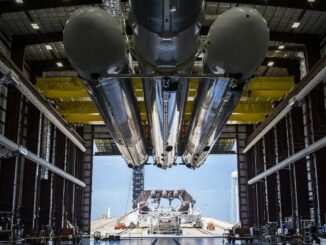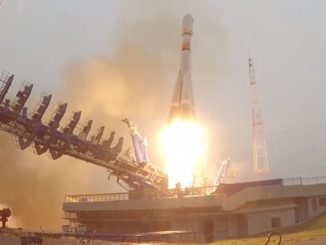Boeing has released a highlights reel video from in-cabin cameras on the December orbital test flight of an unpiloted Starliner crew capsule, showing views astronauts might experience on future missions.
The video includes views out the window of the Starliner spacecraft during its early morning liftoff aboard a United Launch Alliance Atlas 5 rocket Dec. 20, plus footage inside the capsule showing the relatively light effect of launch vibrations on an instrumented test dummy occupying a seat in the Starliner cockpit.
A plush Snoopy doll dressed as an astronaut was also aboard the Starliner spacecraft. The helmet-clad Snoopy astronaut doll begins floating in weightlessness after shutdown of the Atlas 5’s upper stage engines.
The video also shows evidence of repeated thruster firings soon after the Starliner arrived in space Dec. 20. The intense thruster activity was caused by a mission elapsed timing error, which consumed much of the spacecraft’s fuel and led to it missing a planned orbit insertion burn to begin its pursuit of the International Space Station.
The Starliner achieved a safe orbit, but the timing glitch prevented the spacecraft from rendezvousing with the space station and forced a premature end to the Orbital Flight Test.
The final moments of the video released by Boeing Wednesday show views out the window of the capsule, where a trail of hot, fiery plasma is visible as the Starliner plunges back into the atmosphere before its predawn landing in New Mexico on Dec. 22.
After deploying its parachutes and cushioning airbags, the Starliner landed at White Sands Space Harbor with a small jolt, well within safety requirements for astronauts.
The cameras inside the Starliner’s pressurized cabin recorded video throughout the mission. The spacecraft stored the imagery on data recorders for retrieval by Boeing technicians after landing.
Read our full story on the condition of the Starliner spacecraft after the December test flight, and the ongoing investigation into the cause of the software timing error that cut short the mission.
NASA says engineers are viewing the progress of the software investigation to determine if the next Starliner test flight can carry astronauts as officials originally planned.
Email the author.
Follow Stephen Clark on Twitter: @StephenClark1.



